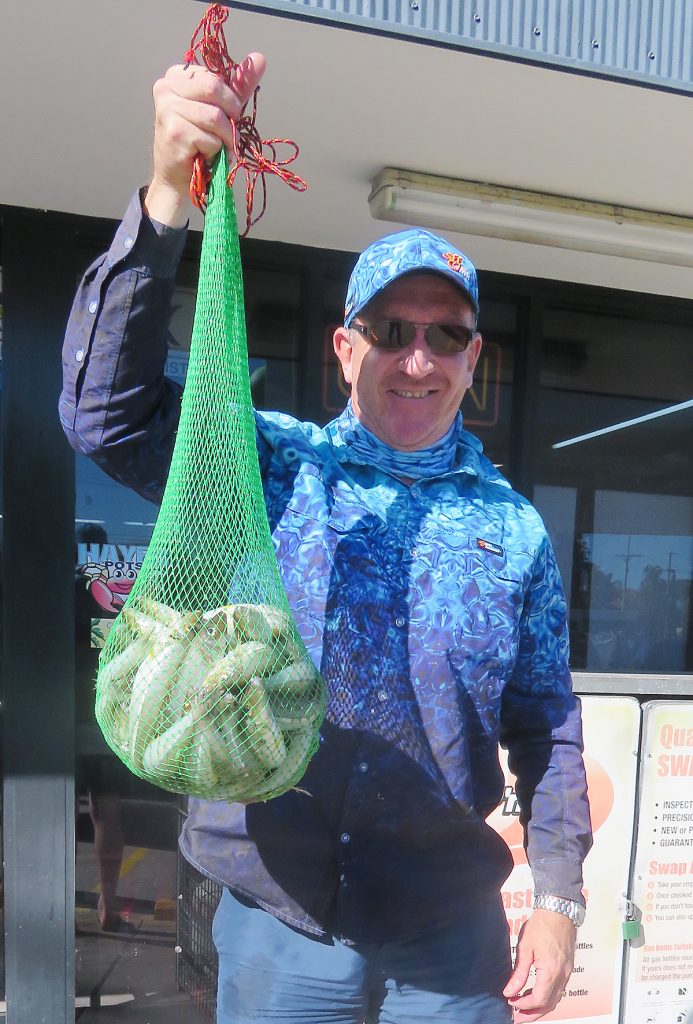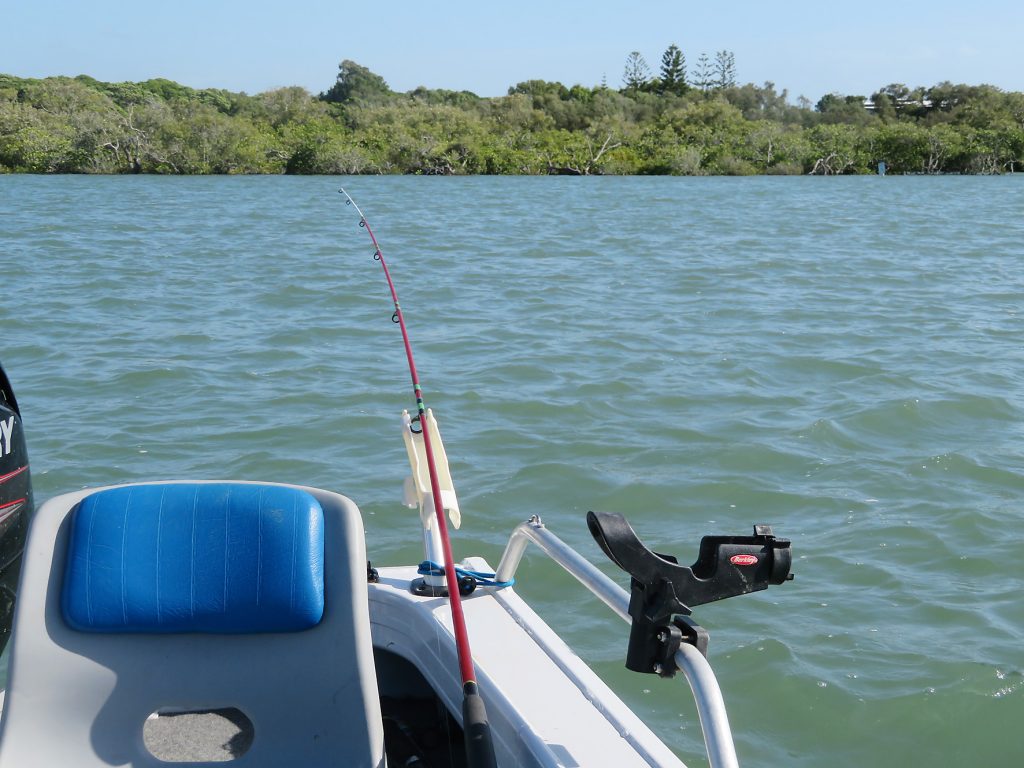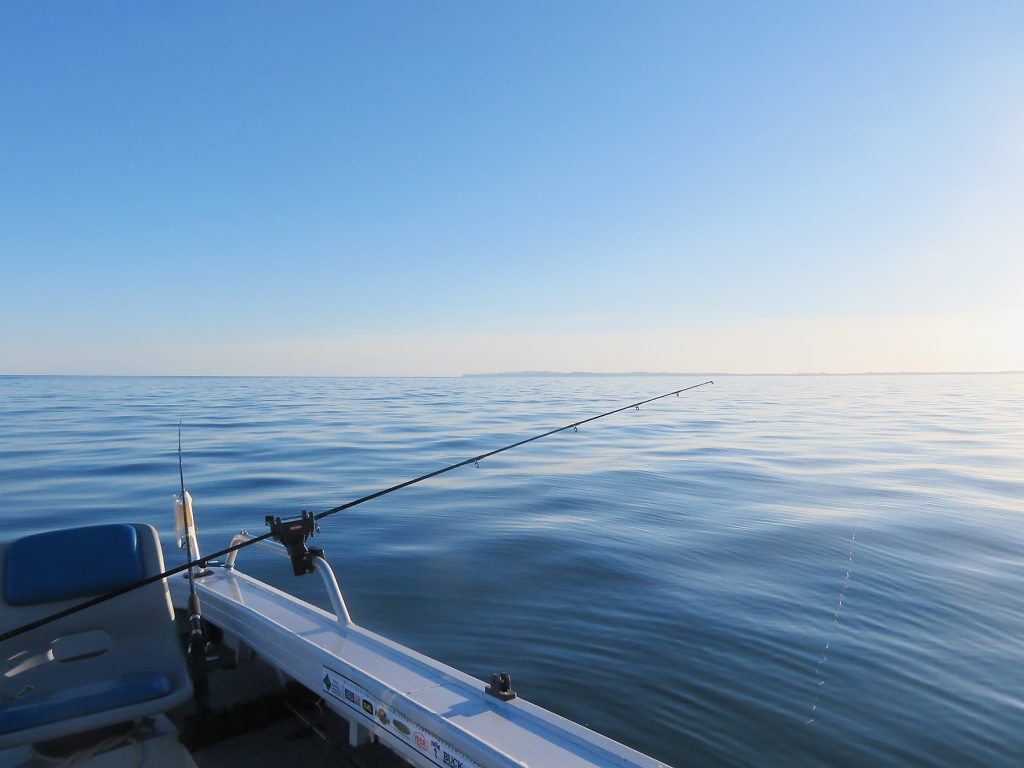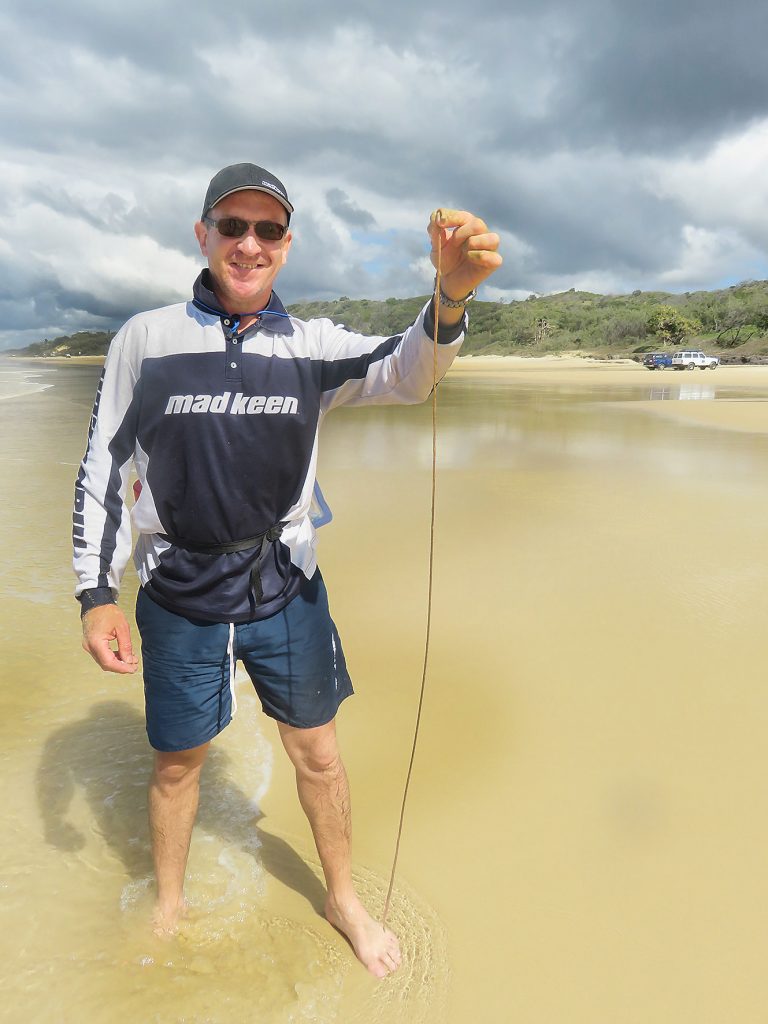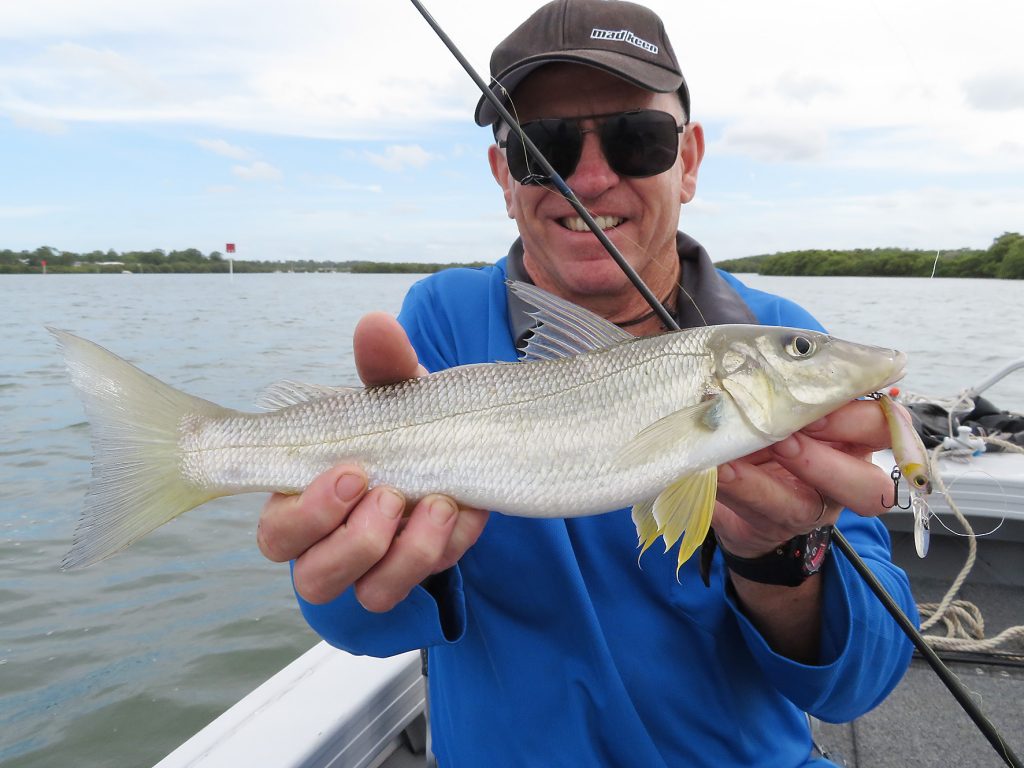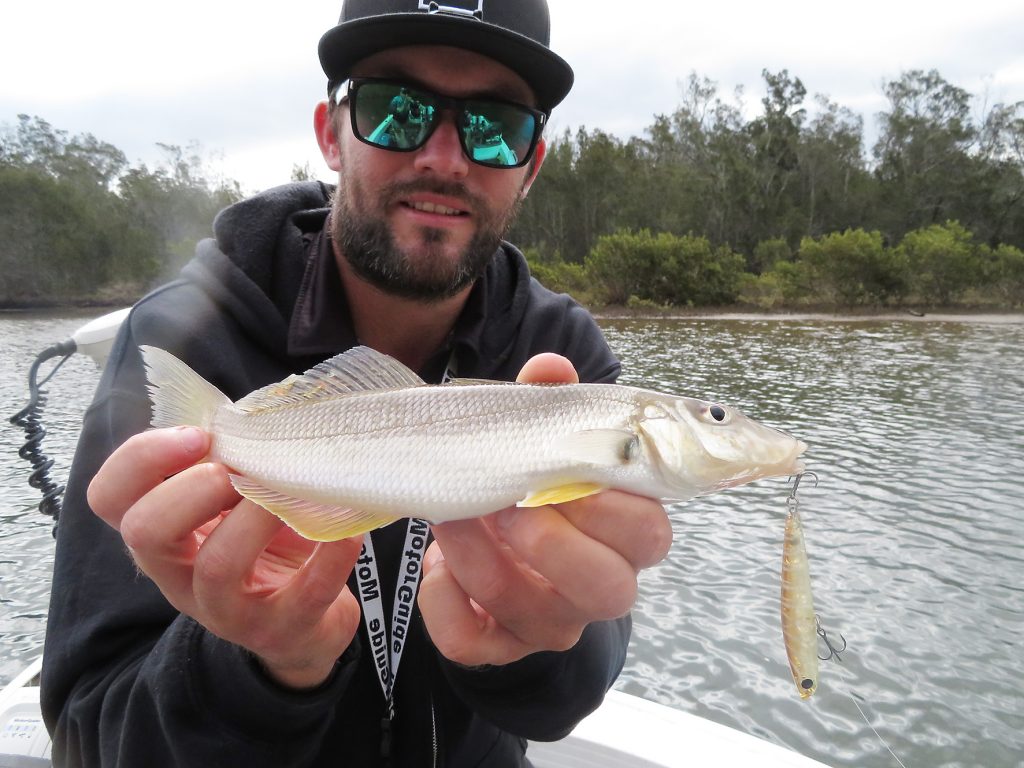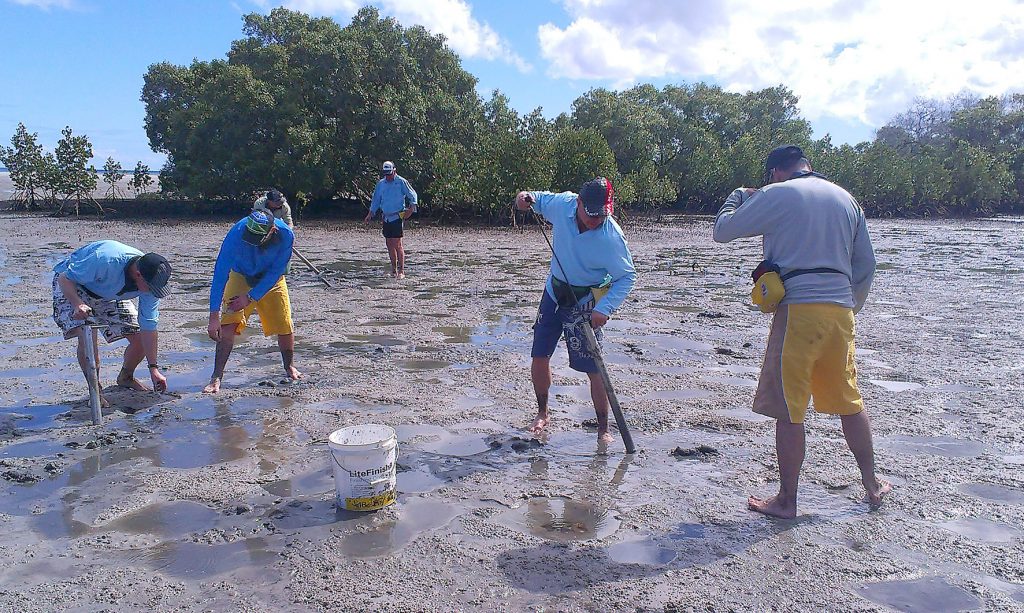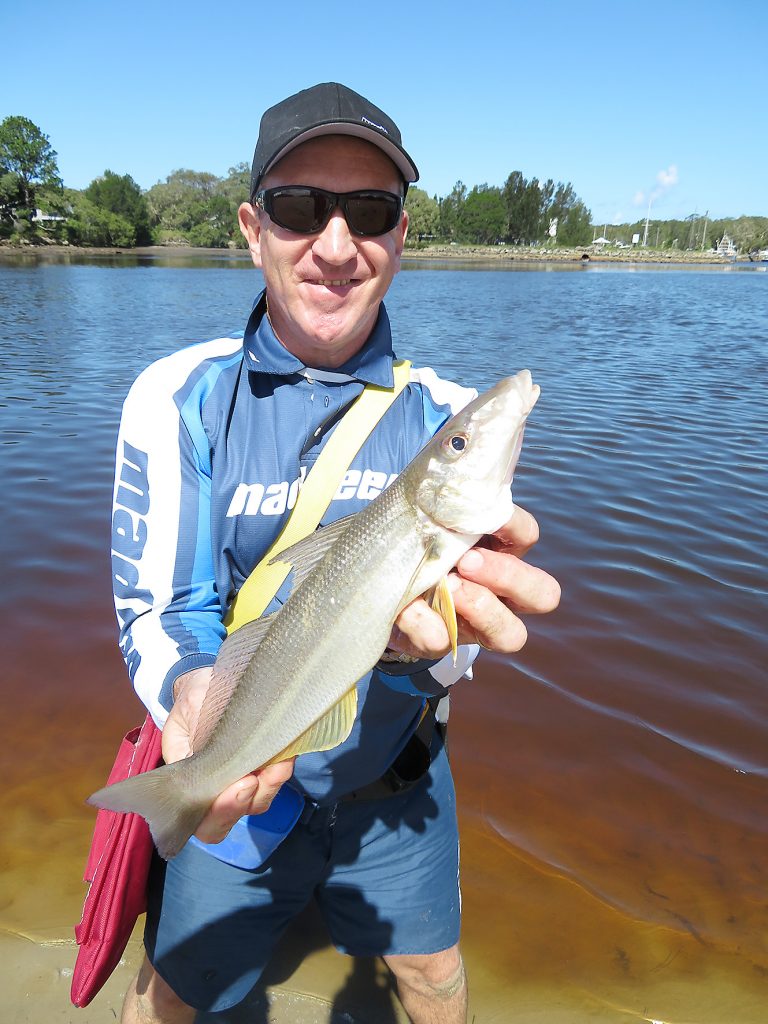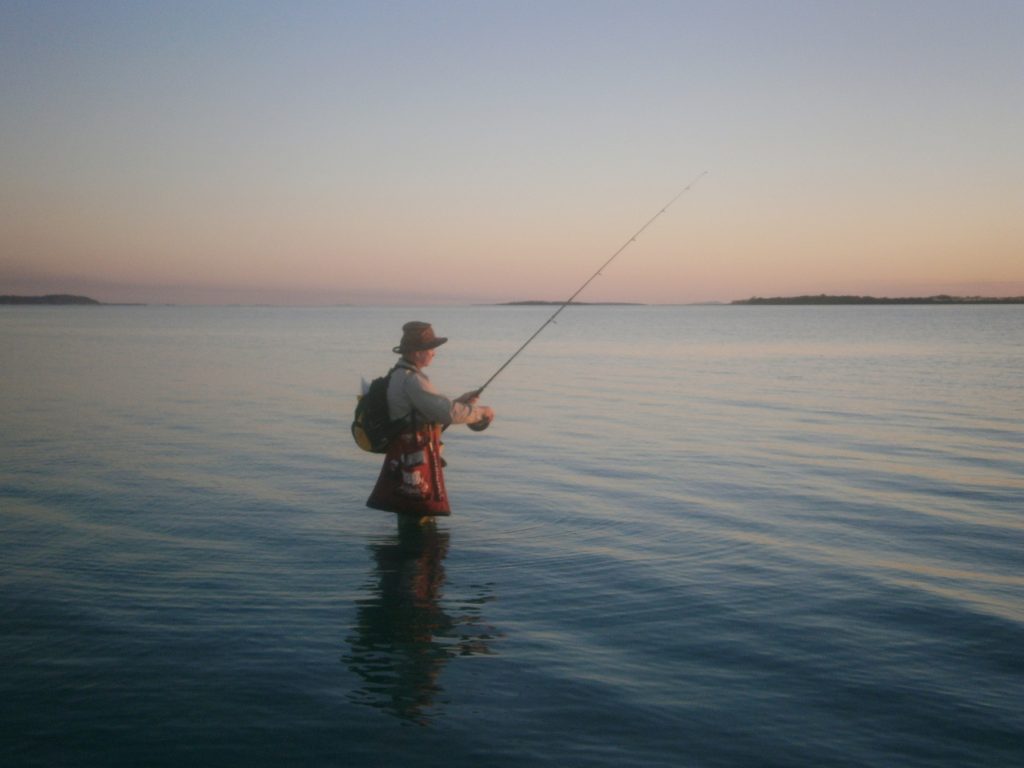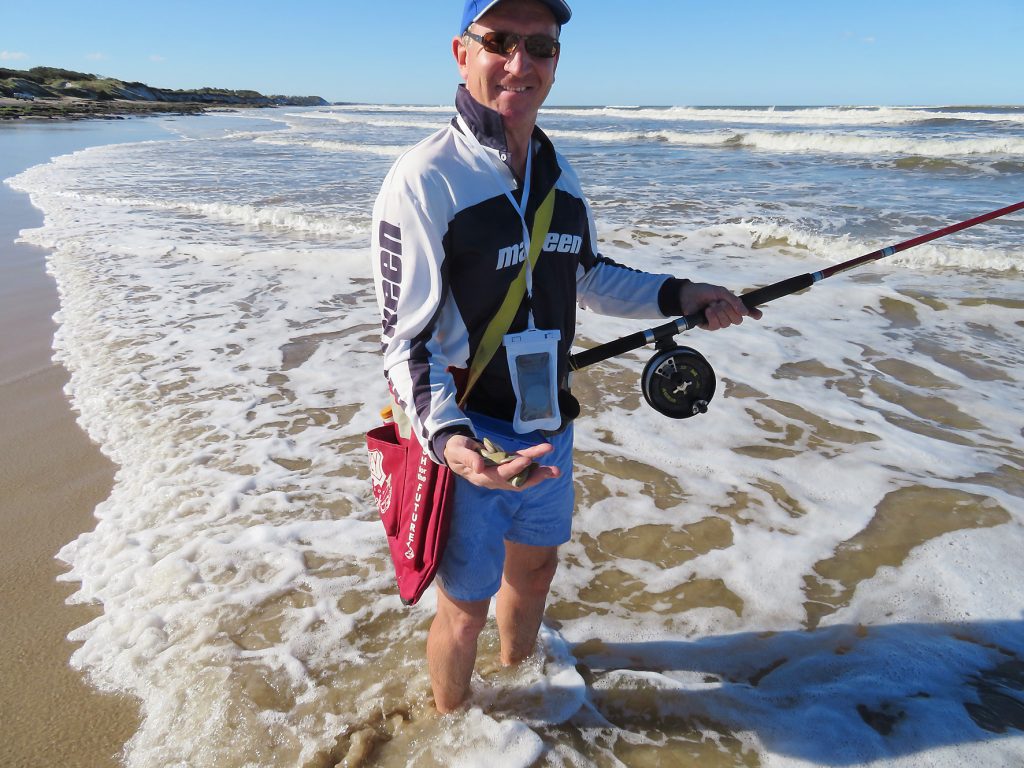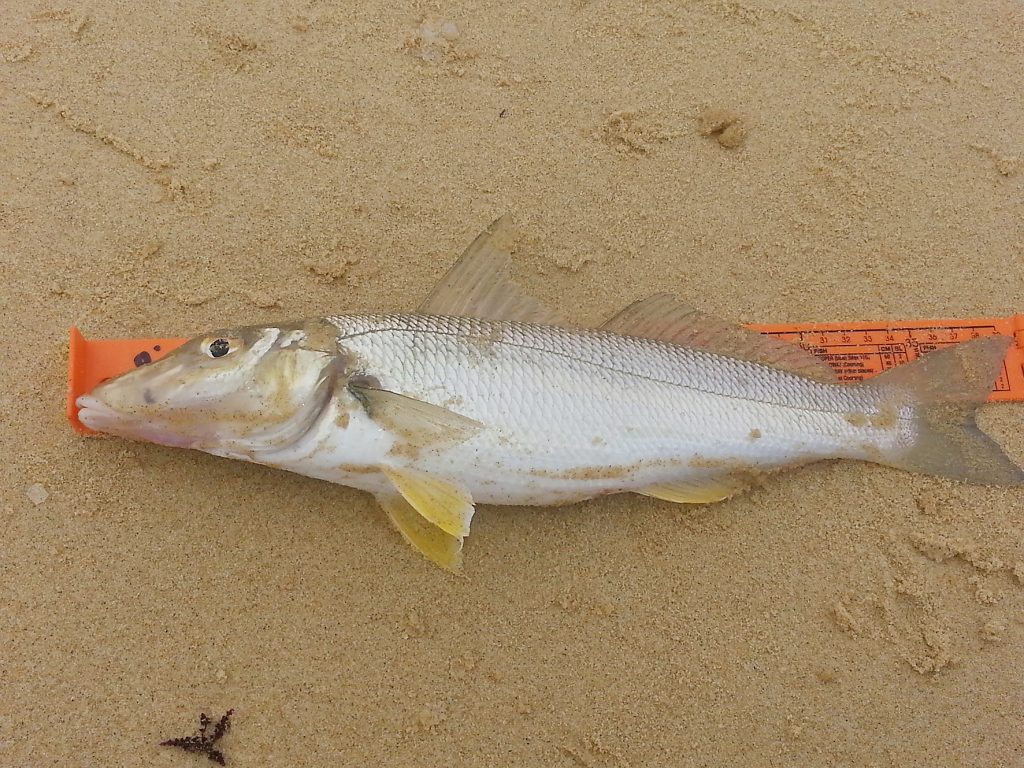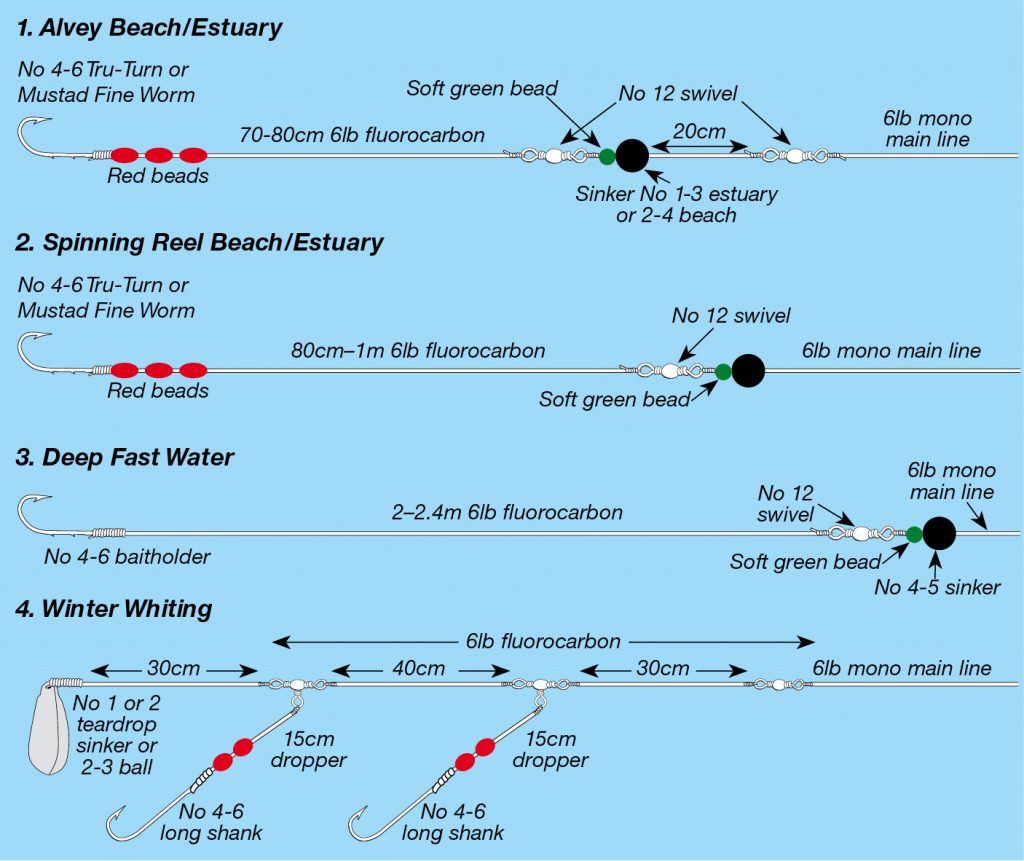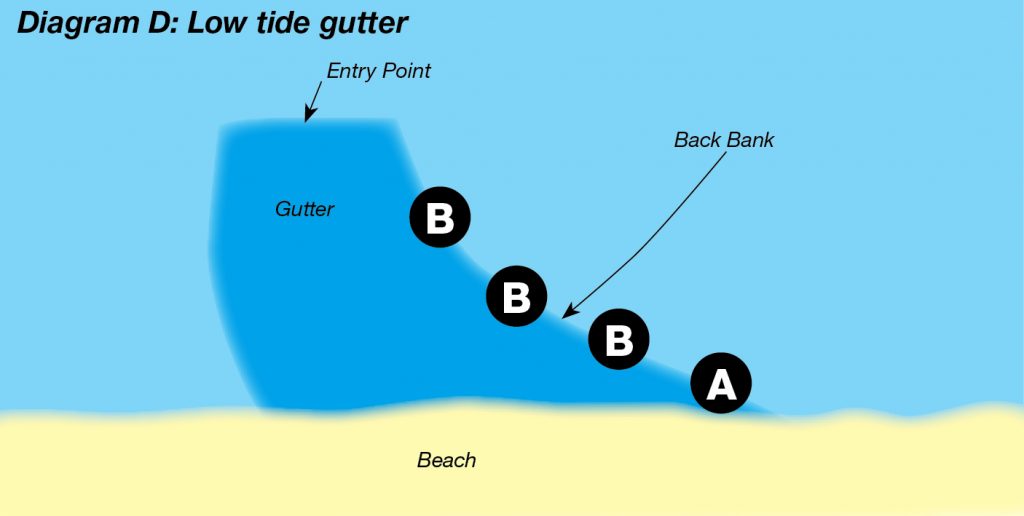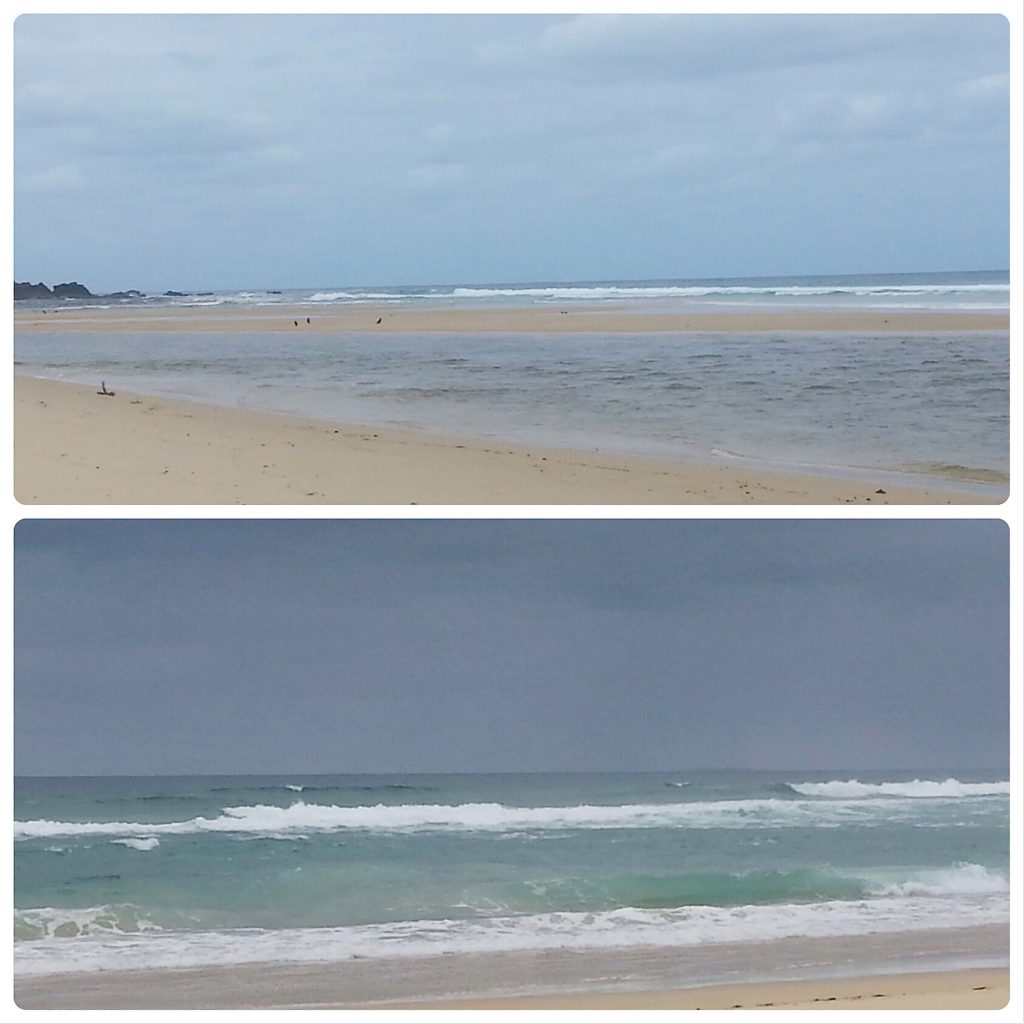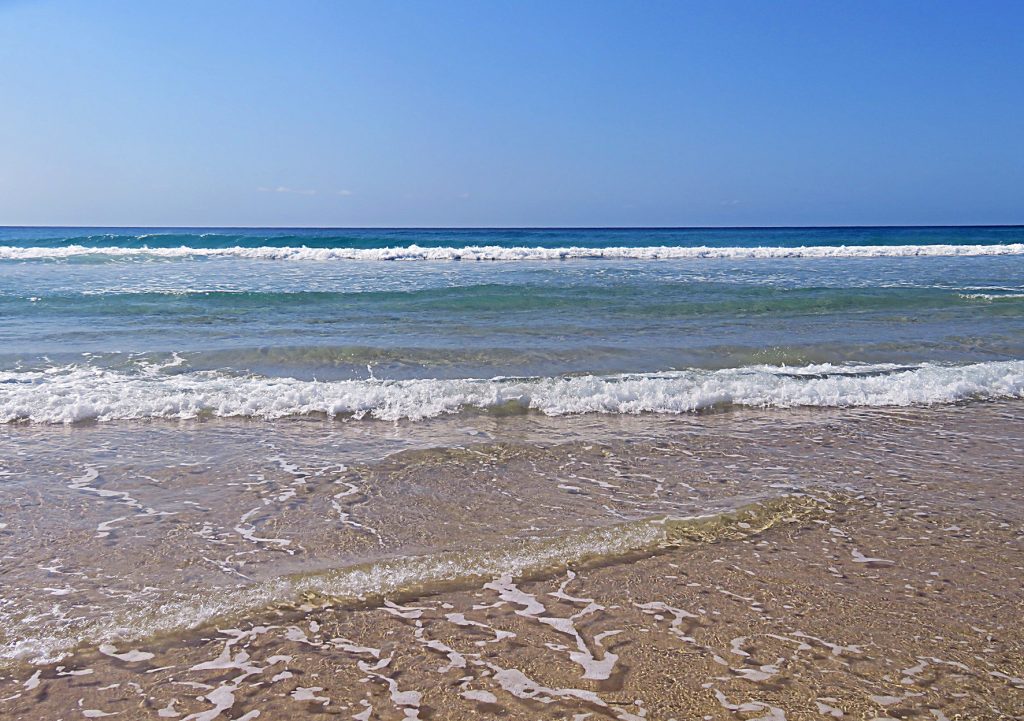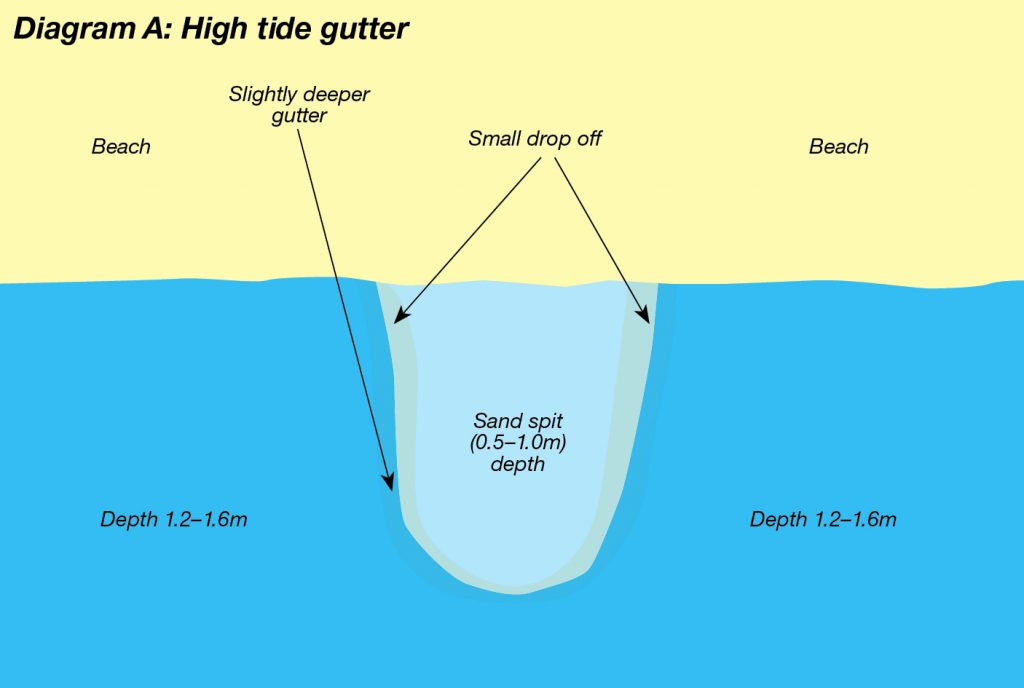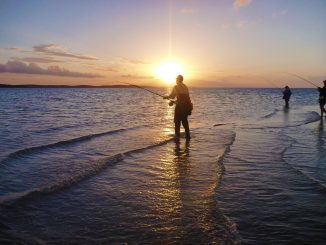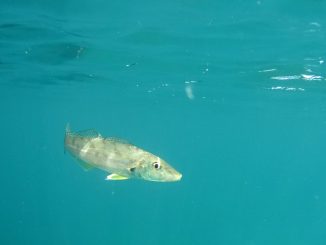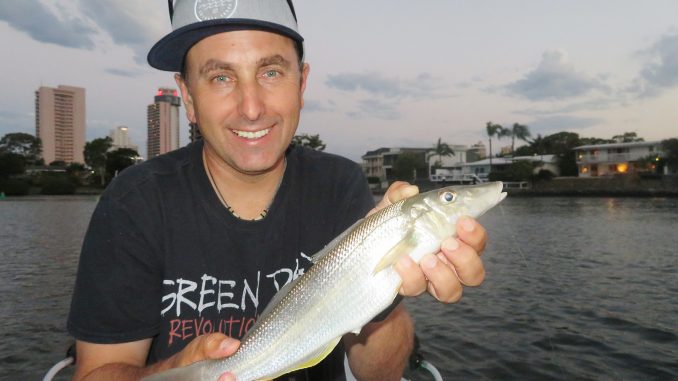
by Sean Thompson •
Whiting are one of the most popular species for anglers of all ages for a number of reasons. Not only do they taste great, but they are widely distributed and the ‘fighting whiting’ fight pound for pound like a fish two to three times their size.
However, there is a big difference in the catch rates of the casual angler compared to the wily old whiting angler. To enjoy the sort of success that experienced whiting anglers achieve, you need to understand the fish and adapt to the location and conditions. This article aims to provide you with the keys to unlock the ‘whiting code’ in four main types of whiting locations across South East Queensland and New South Wales.
These locations include the beach, sand flats and estuaries, deep river tactics, and winter whiting tactics. This article describes the best tides and techniques for each location and then describes the best baits, lures, tackle and rigs to target summer and winter whiting.
THE BEACH
In my mind, beach fishing is one of the most underrated yet productive ways to catch a feed of legal size fish. Yet, I’ve lost count of the amount of times casual anglers have been surprised to hear me say that. The fact that so many casual anglers consider beach fishing unproductive probably comes down to where and how they fish. All too often I see inexperienced anglers or families fishing the beach directly in front of the track to the beach. This is usually in barren, featureless water or in an area full of swimmers and surfers. Added to that they are using baits like frozen prawns and squid, or fishing with line as thick as whipper snipper cord and with enough lead to sink a small ship!
All is not lost, however. Once anglers learn a few beach fishing secrets, they will soon realise the beach can turn on some great fishing for species like whiting and even during the middle of the day!
Beach locations and tides
I often read in fishing books and magazines that the last two hours of the rising tide and the first hour of the falling tide is the best time to fish for whiting off the beach. This can be true in the right gutters and conditions, but be assured that in certain circumstances the opposite applies, and the best time is the hour or so either side of the low tide.
While every rule can be broken, outlined below are the type of beach formations and conditions I like to fish according to the stage of the tide.
High tide gutters
I have three favourite types of beach gutters I prefer to fish at or around high tide. In all three cases, I am looking for nice clean water with a bit of white wash. This provides cover for the whiting.
The first is a big sand spit covered by about 0.5-1m of water on high tide (see diagram A), which drops away into a slightly deeper gutter. The surrounding gutter is reassuring for the fish to escape into if predators come hunting for them in the shallows.
The other reason I like these types of gutters is that even in a slightly larger swell the fish get some respite from the choppy surf on the shallow sand spit. Added to that is the fact the sand spit usually holds their favourite menu of pipis and beach worms.
To fish these type of gutters, stand back 10m or so from the water’s edge and cast to the back of the sand spit and slowly retrieve your bait towards shore. If no fish, cast from an angle onto the sand spit and retrieve the bait over the edge/drop off into the slightly deeper gutter.
Another favourite high tide location is a shallow gutter pressing hard up to the shore with a small shore break (see diagram B). The waves generally curl up less than 0.5m and break right on the beach and thus expose beach worms and pipis to the hungry whiting. The whiting usually feed just behind the shore dump, so it is important to either retrieve your bait into this zone, or cast just behind the break with a heavier 4 ball sinker to hold your long 1m trace in the strike zone.
A third type of high tide gutter I like for whiting is one which at low tide has a very shallow and clear inner gutter along with an exposed back sandbank (diagram C). By high tide, the inner gutter has nice foam covering from incoming waves, while the back sandbank is covered by about 1m of water. In this case, waves will break on the edge of the bank and expose yabbies and worms, which will be washed by the force of the water just over the edge of the sandbank into the gutter. So in this case, a cast up onto the sandbank and slowly retrieved into the gutter just after the wave has broken and spread its foam over the gutter is the way to go.
Low tide gutters
Low tide shallow gutters (see diagram D) are some of the least fished on the beach, but can turn on some of the best whiting action of the lot. Features of a great low tide gutter include; a short or narrow gutter very close to shore, a blind end that closes up on the shoreline, a back sandbank that runs at 45° from the shore, enough depth so the water is not too turbulent and light swell of under 1m. Usually, the gutter has a clear northern exit and entry point.
By far the peak period for these types of formations is one hour before to one hour after low tide. With the right conditions (light swell), low tide concentrates the whiting in the deep water closest to the pipis and worms at the shore or along the back bank. As the tide rises, the fish spread out with access to more water or disperse to cleaner, calmer water if the swell and water movement becomes too turbulent.
The first place to start in such gutters is position A on diagram D. This is known as the blind or closed end of the gutter. As this is so close to the shore, do not walk right down to or even in the water before you cast. It is possible the fish are right up near the shoreline, so your first casts should be with you standing more than a rod length away from the water’s edge.
After you have worked spot A with a series of casts or let the bait sit for 5 minutes or so, you should move and cast to the back bank (spot B). Generally casts to spot A should be left to wash around just beyond the break, while for spot B you can try and cast and retrieve the bait over the edge, or let it sit around the edge of the drop off.
If after 10-15 minutes you have caught no fish, or the fish stop biting, move to the next gutter of similar formation. Given the small window with the tides, it is best to have scoped these spots out beforehand so you know how far you have to travel between gutters.
Beach corners
While still technically defined as ‘the beach’, beach corners are another brilliant location for whiting. Beach corners are areas where the sand meets either rocky headlands or large rocky outcrops that protrude into the water. The only other ingredient you need is some slightly deeper water where the beach meets the rocks. Generally there is a permanent gutter carved out at such spots.
You should use the same set up and rigs for beach corners as the main beach, but be aware that the best time to fish them will depend on the swell and wind direction. On those days with very calm, flat seas and clear blue skies, beach corners can be the most productive spot on the beach for whiting as it gives them some form of structure and therefore protection.
In terms of technique, cast your bait out into the gutter (not too close to the rocks that it becomes snagged), and commence a slow retrieve. Cast back to the same area if you land any fish. I find these spots can fish very well at dawn and dusk regardless of the tide due to the structure provided for the fish, as well as the lower light conditions.
SAND FLATS and ESTUARIES
Estuaries and sand flats are broadly defined as either saltwater rivers, creeks, bays, broadwater, sandy straits or the western or calm side of islands such as Fraser, Moreton and the Stradbroke islands in Queensland.
It is in these estuaries where most of the big ‘elbow-slapping’ whiting of 35cm+ are caught.
Shore-based
Catching whiting while wading the flats is one of life’s simple pleasures. You can either hop out of the boat and wade the flats at low tide, or you could fish land-based from the shore of rivers, creeks, or my favourite location, the flats on the western sides of Queensland’s big sand islands.
The areas you want to be looking for are large sandbanks or estuary flats that end up with a decent flow of water over them during the middle stages of the tide. You will always find the bite slows for half an hour to an hour around the change of the tide period, so be sure to focus your efforts on the rising and falling tides.
The best sort of flats or banks are those with yabby holes, as well as plenty of melon holes, undulations and small drains from the fast flowing water. This ‘fast run’ will stir up plenty of bait and provide the fish with access to areas such as holes and drains that they can hold up and feed. As the tides increases, the whiting will follow the drains in for the first few hours of the tide, before they disperse to the shallows for more access to the bait when the flats are well and truly covered. As the tide falls, you want to be following the fish out in the drains, until eventually you might want to be fishing off high sandbanks or spits into slightly deeper water during the bottom 2 hours of the tide.
By far and away my favourite technique bait fishing the flats is the cast and retrieve method with a small Alvey reel and light rod. Whiting often love moving baits, so this means you want to cast your line out and slowly retrieve it back to you, with a slow constant wind of the reel. Throw some pauses of 10-20 seconds in as well if the action is slow to see how the fish might be reacting to the bait on a particular day. The purpose of the long, light rods are distance, but a whippy tip allows the whiting to pick the bait up and run with it without feeling too much resistance. In fact, with an Alvey reel you can actually wind backwards on your reel to give the fish line at the first indication of a bite and therefore less resistance when they pick the bait up and run.
Another tip for wading the flats, particularly as the tide rises, is to stir the sand or mud up with the heel of your waders or feet as you retreat to the shore with the tide. This will create a cloud of water and berley trail that fish will come to investigate for food. Finally, adding 3-4 small piece of red tubing or red beads in your rig just above the hook makes your bait stand out like a beacon on the sand and acts like an attractant for the whiting. Some people use one long piece of red tubing, but I find this adds too much weight and unnatural feel near the hook. Added to that, the smaller pieces of tubing tend to slide up and down the trace making your bait stand out that bit more.
For those anglers who prefer a more relaxed style of fishing, the ‘set and forget’ technique with your rod holders can still produce a few whiting in estuaries. However, the trick here is to buy some metal rod holders that will hold your rod parallel to the water, and not upright at 90°. By having your rods down low to the water, you will decrease the resistance of the rod to the fish as they pick the bait up and run.
Boat-based
Many of the areas mentioned above are excellent target locations for whiting, except with a boat you have the advantage of not only being able to move quickly between spots, but also fish from the deeper side of sandbanks. As the tide rises, you can anchor at the drop off and cast your baits up over the shallows (as far from the boat as possible) where the whiting will be feeding. You can also cast another rod to the edge of the drop off and work out where the fish are. As the tide falls further, the best place to anchor is a little further back in the channel, so you are casting to where the sand bank drops into deeper water.
Other productive locations are sandbanks that don’t uncover at low tide with soft muddy sandy and an undulating bottom. You can either drift these areas to find the fish, or anchor up in likely locations and let the fish catch themselves on your rods set low and parallel to the water. Think about the stage of the tide as well. That is, fish closer to the entrance of the estuary as the tide begins to push in giving the whiting access to new banks. Then as the whiting go off to the bite, move further up the estuary as the fish will be chasing the tide as it gives access to new banks. The same principle then applies in reverse as the tide drops, so then you want to be working your way back towards the entrance. Finally, one thing to be aware of is that after heavy rain, the whiting will push from upriver, down towards the entrance and a couple of days after rain, some thumper fish can be caught even in discoloured water near the entrance.
Estuary lure fishing
Chasing whiting on topwater lures such as stickbaits and poppers as well as small soft plastics is very popular with lure anglers. This is exhilarating fishing, but until you become very experienced at it, you shouldn’t expect the same results as bait if numbers are your end game. If, however, you are after some exciting fishing, then this is for you.
Basically you want to be chasing whiting on lures in the same sort of estuary flats as described above, except you should limit yourself to areas of less than 1m of water, even half a metre. The trick is to use a 7-7”6 high modulus graphite rod and undertake a constant wind of a 1000-2000 size reel. The action of the lure you are trying to achieve is either a triangular side-to-side ‘walk-the-dog” pattern with stickbaits like Bassday Sugapens, or a ‘bloop-bloop’ approach with poppers (dispersing water at the front of the cupped face of the lure). Very light braid of 2-4lb and 4lb monofilament (not fluorocarbon) leader is recommended for topwater lures to ensure the leader isn’t sinking and thus dragging the lure under the water.
FAST RIVER WHITING
Areas to look for
Some rivers have a much faster flow than others due to their natural or man-made topography. This is certainly the case for rivers such as the Nerang on Queensland’s Gold Coast. These fast-flowing rivers tend to have high banks, or man-made canals which means the water shelves away quickly, and being fairly narrow with a big funnel at the entrance, it means much more tidal run. This means you need a different approach to the small sinker approach of the flats.
What you are looking for in these deeper rivers are sandbanks, which, due to the depth of the river, are not exposed at low tide. The sand banks you are looking for have soft, sandy bottoms, which means the pressure of the river flow will scour out undulations on them. You can spot these areas in 2-3m of water even without a sounder by the lumpy ripple effect on the water surface as the tide and a gentle breeze pushes in. Otherwise you can use your sounder to spot these undulations that are like corrugated road bumps on the sandy bottom that provide the whiting not only with a spot to gather out of the tidal flow, but they are also an area where the water will eddy around carrying with it food such as jelly prawns, worms and yabbies.
Another good place to try is the edge of the sandbanks in the river where the sandbank meets the channel. The channel markers are a giveaway on these locations and are a good place to start.
Technique
What makes this type of fishing different is the fast flow of the water and the need for you to adopt your techniques and rig. I learnt these techniques from reading and going out fishing with local experts such as Wayne. To deal with fast flowing current you want to use two anchors, one at the strern and one at the bow to prevent the boat from moving around. The technique is to throw out your lines with very long traces (see rigs diagram) and lay up to two long whippy rods, around 10’6”, low to the water and out the front and back of boat and two shorter whippy rods of about 9” at the side of the boat. As noted in the diagram, you also need a heavier ball sinker (4-5 ball) to hold your rig in place during the middle stages of the tide. The long rods serve two purposes; they allow you to better cast and manage the very long traces and are long and whippy to absorb the bite and lunge of the fish when they swallow and run off with the bait.
The next most important tip is if you get a bite on your rod, don’t touch it! This is the fish mouthing and crushing the bait. Tougher tackle shop brought bloodworms will take longer to crush and swallow than thinner mangrove worms, so if you have the former you really have to be patient. Wait until the rod tip dips down heavily before you lift and strike. If you miss a strike, try feeding some line back out to the fish with the rod still in the holder.
The other consideration is to keep your rig very simple, with a very long trace and do away with the red tubing, as some of the best fishing in the Nerang at least can come at night during the late spring to summer months, so the tubing is ineffective and just adds more weight. During winter though these fish are a daytime proposition.
Finally, if you can, avoid the slow change of tide period from about 1hr before to 1hr after the change of tide, as this tends to attracts more bream and toadfish, whiting prefer the run.
BAY WINTER WHITING
Despite their name, winter whiting can be caught throughout the year in their usual locations, such as the big bays and straits of South East Queensland. What is great about these fish, is they are a little less finicky (so will take more of a variety of baits) than the summer whiting and tend to gather in larger schools. This means, once you find a school you can have a lot of fun and catch a nice bag for a feed. For this reason, they are a great fish to target to get kids or newcomers into fishing.
Areas to find them
‘Winteries’ tend to prefer a mix of silty and muddy bottoms. I also like to look for clear patches of sand between ribbon weed on my sounder if I can’t find any schools by searching in a grid pattern using my Lowrance structure scan (side scan) technology.
My hot spots tend to be in water around 3-4.5m in Moreton Bay and the Sandy Straits, although they can be found in deeper water such as near the Moreton Island sand hills. I’ve also found a bit of a pattern in that if the water is very clear, they will move to deeper water (3.5m+). Furthermore, during most winters some of the smaller fish (under 25cm) also enter the mouths of rivers and creeks.
Another tip is to use your sounder’s GPS like a fishing diary. Mark spots where you are catching a number of fish, and then rename a mark in the middle of the fish with the species and date. That is, ‘Winter whiting June 18’. By doing this you can do a search of your waypoints for the species you are after, then find either a recent month, or the same month from a previous year.
Drift or anchor?
Generally, I find that if the water is glassy or flat the fish get a bit wary and prefer a moving bait, so I drift or cast and retrieve at anchor in these conditions. When at anchor, I also try to concentrate the fish in the area by dropping over a berley bucket full of chicken pellets covered in a couple of capfuls of tuna oil.
If you decide to drift and find a concentration of whiting, you can anchor up current from them and cast your baits back to the school. Otherwise, if the fish are more spread I will drift and GPS the spots I catch fish from. I will continue to drift until they go quiet and return to the top of your drift. I always drive the boat around in a wide arc when I go back to the start of my first mark though so as not to spook the fish by driving over the top of them.
Finally, because these are a schooling fish, you can catch a couple of fish at a time by using a double dropper paternoster rig. See the rigs diagram hereabouts. Another thing great about these fish is they will also take frozen baits such as red-dyed worms and you can also catch a bigger class of fish on artificial baits such as the Berkley Gulp Sandworm. The only time I find these plastics don’t work is when the water is glassed out and their little legs or feelers aren’t moving as your drift slows right down.
So there you have it. A few tips on techniques, tackle, baits and more for catching whiting from four very different locations. I hope it helps you to catch a few more of this very popular species. And finally, for more tips, reports and fishing information, jump on my Facebook page, Ontour Fishing Australia.
BEST TACKLE
Beach
Rod Light 10’6 2-4kg with a whippy tip
Reel Alvey reels in the 50-55 series
Line thin diameter 6lb mono (e.g. Platypus Super 100) with 6lb fluorocarbon trace.
Estuary flats
Rod As above although shorter light rods in 7”-9”
Reel Alvey reels or 1000-2000 size spinning reels can be used from boats or riverbanks
Linw 6lb line and leader
Fast rivers
Rod Long 10”6 rods at anchor from the box and stern, 7”-9” light whippy rods from the sides
Reel Alvey reels and 1000-2000 size spinning reels
Line 6lb line and leader
Bay winter whiting
Rod 7”-9” light rods with whippy tips
Reel Alvey reels and 1000-2000 size spinning reels
Line 6lb line and leader
BEST BAITS
Beach Live beach worms, sliced pipis and yabbies in calm gutters
Estuary flats Yabbies, live mud, wriggler or squirt worms, beach worms on western side of sand islands
Fast rivers Live mangrove or blood worms, jelly prawns, yabbies
Bay winter whiting Red dyed frozen worms (less expensive than live worms and work), yabbies and Gulp 2” sandworm soft plastics on no. 6 long shank hook

